
Blog / Leadership & Transformation
9 Crucial Team Building Strategies for Business Managers
Categories

Teamwork and human potential - two expressions that hold tremendous significance in modern business.
As a business manager, you know first-hand the vital role these two elements play in the overall success and advancement of your organization. But how much do we genuinely understand these terms? How are they intertwined, and can we harness their immense power in our teams?
In this article we’ll embark on an enlightening journey to explore nine critical facts about human potential and team building in this article. Prepare to uncover insights that will revolutionize the way you view, nurture, and leverage your team toward greater heights.
Understanding the importance of Team Building in Leadership
Team building is of paramount importance in the realm of leadership, significantly influencing a team's performance and organisational success. As a leader, your ability to galvanize a disparate group of individuals into a cohesive and high-performing team acts as the linchpin for furtherance and growth. Emphasizing effective team-building practices ensures synergy, fosters innovation, and bolsters overall productivity, which in turn, steers the organization towards intended goals.
Leadership and team building are inextricably linked, with the latter acting as the driving force in actualizing the leader's vision. By leveraging the power of team building, leaders can cultivate an environment of collaboration, align the team's efforts with organizational objectives, and harness individual strengths towards collective success. Hence, understanding and implementing effective team-building strategies stands myriad benefits, augmenting both individual and organizational potential.
Here are some revealing facts about effective team building in business:
- High-performing teams are 1.9 times more likely to be comprised of employees who feel their voice is heard
- Teams that foster trust among members have been found to be 2.5 times more likely to be high-performing
- Clear and open communication is a key factor in team performance, with 97% of employees and executives believing lack of alignment within a team impacts the outcome of a task or project
- Companies that encourage collaborative work are five times as likely to be high-performing
1. The Role of Communication in Effective Team Building
Communication lies at the heart of effective team building. As a business leader, it's your role to pave the way for transparent and open variables of communication. Encourage members of your team to express their ideas, concerns, and feedback freely. This open communication environment will foster a sense of trust and respect among your team members.
Without effective communication, misunderstandings and conflicts can arise, hampering team productivity and morale. Emphasizing on communication facilitates the process of problem-solving and supports collaboration. An open communication culture also allows for the dispersal of important information quickly and comprehensively, ensuring everyone is on the same page.
Team meetings are an excellent platform for promoting effective communication. Through regular meetings, team members can discuss their progress, air any concerns, and provide updates on ongoing tasks. Make sure these meetings are interactive and inclusive, allowing every voice to be heard.
Business leaders can also use digital tools to enhance team communication. Platforms like Slack, Microsoft Teams, or Google Hangouts offer an effective medium for immediate and easy communication between team members. They also support the sharing of important documents and resources, further facilitating the team's operation.
Workshops and training can also help sharpen communication skills within the team. This may include sessions on effective listening, clear and concise expressing, and understanding nonverbal cues. Such training can significantly optimize the quality of interactions and augment the team's overall productivity.

2. Creating a Collaborative Atmosphere: A Key Strategy for Team Building
Instigating a collaborative atmosphere is vital for business managers who wish to see their teams flourish. Essentially, collaboration fosters an environment where innovation thrives on diverse perspectives and a shared commitment to joint decision-making and problem-solving. To achieve this, you need to cultivate an environment of mutual respect, open communication, and joint accountability.
The first step in encouraging collaboration involves clearly defining team roles and responsibilities. By allocating tasks based on individual strengths and areas of expertise, you create a mutually supportive framework where team members can lean on each other's strengths. This encourages collective responsibility and interdependence, setting the stage for authentic collaboration.
Another great strategy for fostering collaboration is through the use of team building activities aimed at enhancing coordination and communication among team members. These exercises help break down barriers, realize shared objectives, and promote a better understanding of each member's unique contribution to the overall team effort. According to research, team-building activities can dramatically improve teamwork within an organization.
Finally, using digital collaboration tools can significantly enhance the team's cooperative efforts, especially in today's digital age where remote working is a norm. These tools can streamline task management, foster communication, and improve work efficiencies, thus, promoting an environment of effective collaboration.
Remember, the objective is to form a team that works together rather than individually. When you invest your resources in developing a truly collaborative environment, you are essentially investing in a culture of success.
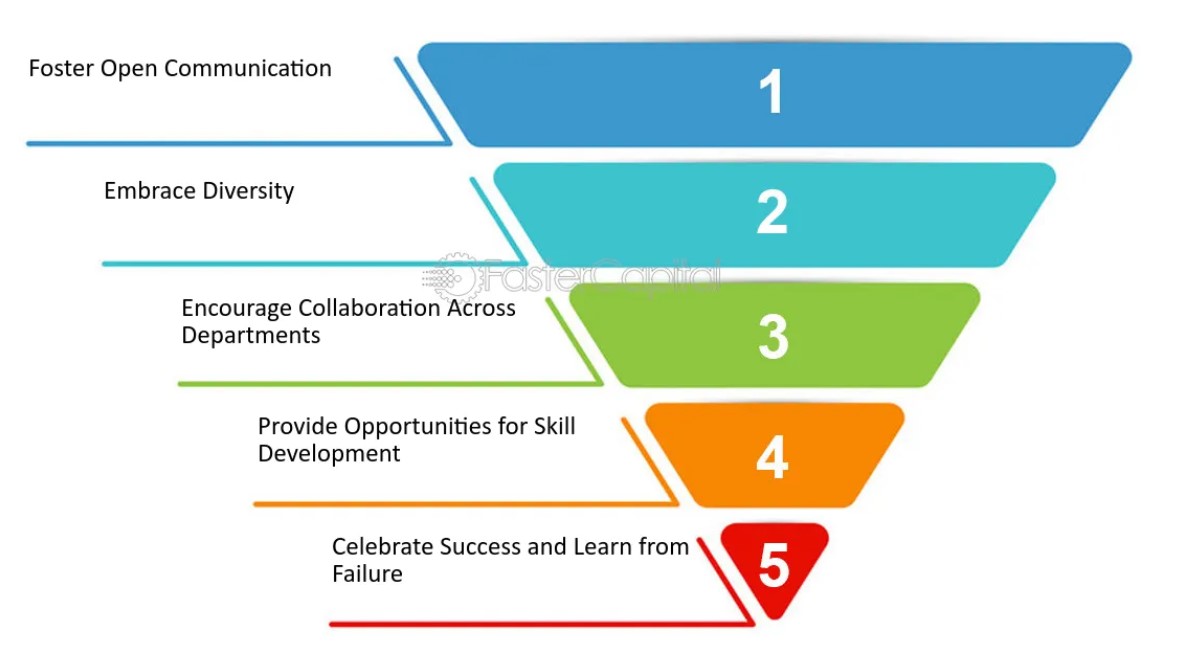
3. Integrating Diversity: An Essential Team Building Technique
Embracing diversity in the workplace has proven to be a powerful strategy in fostering strong, cohesive teams. A diverse team brings together a wide range of experiences, backgrounds, skills, and perspectives. As a manager, it's essential not only to recognize these diverse attributes but to leverage them in a way that benefits the team and, by extension, the business.
Start by creating an inclusive atmosphere where all team members feel valued and heard. This is not just about addressing outright discrimination or bias, but also ensuring that everybody's point of view is regarded and respected. This might mean adapting communication methods, providing adequate resources for each team member's needs, or understanding variations in working styles.
Acknowledging and celebrating different cultural holidays or traditions, and fostering open and respectful conversations about differences, are some effective strategies. You could also consider instituting a mentorship program that pairs team members of differing backgrounds or experiences. This has the benefit of breaking down barriers and stereotypes, leading to a richer and more diverse team culture.
Providing diversity and inclusion training to your team can also help foster understanding and empathy among team members. Unconscious bias training, for example, is a valuable tool for helping each person recognize their own biases and learn how to overcome them. Once the team can appreciate and understand different experiences and perspectives, this can lead to improved collaboration and problem-solving.
Effective diversity integration also calls for consistency. It's important to continually revisit and refine your diversity and inclusion strategies. Regularly seek feedback from your team on what is working and what isn’t, and be prepared to pivot your strategies as needed. The goal here is to ensure every team member feels valued, heard, and seen, which in turn will create a sense of belonging and unity within the team.
Finally, remember that diversity is not only about race or gender. A truly diverse team also encompasses different ages, experiences, skill levels, working styles, and perspectives. So, make sure to cast a wide net in your diversity and inclusion initiatives, and in the end, you’ll have a team that’s rich in ideas, perspectives, and potential, ready to tackle any challenge.

4. Encouraging Personal Development: The Hidden Secret of Team Building
Encouraging personal development is more than just a feel-good strategy, it's a hidden secret to effective team building that many neglect. As a business manager, remember that investing in the growth of your employees is synonymous with investing in the robustness of your team. Your team members look up to you not only as a leader but also as a guide who can help them unlock their full potential.
How can we, as business leaders, facilitate this advancement?
One effective way is by providing ample learning opportunities and enriching team-building exercises targeted at cultivating new skills. Often, these activities present individuals with challenges that allow them to step out of their comfort zones. This not only helps in fostering a learning culture but also encourages team members to support each other's growth.
Coaching and mentoring are also key components of this strategy. Create an environment where sharing knowledge is the norm. Encourage seasoned team members to take less experienced colleagues under their wing. By doing so, you’re fostering a system of peer-to-peer growth, which is often more impactful than traditional lines of learning.
Promotion of personal growth and development has a two-fold effect. Not only does it bolster the individual skills of your team members, but when executed correctly, it can also improve their collaborative skills, building a stronger and more cohesive team. Remember, your team is like a watch, where each component must function correctly for accurate timekeeping. This metaphor holds true in business, where team members growing together encourage seamless synchronization and a more robust team output.
Last but not least, recognition plays a critical role in encouraging personal development. Rewards and recognition for achieved milestones instill a sense of achievement in team members, which motivates them to continue to grow and contribute to the team in more significant ways. In the end, personal development is a continuous process and a strategic tool that can bring incredible benefits to your team building efforts.
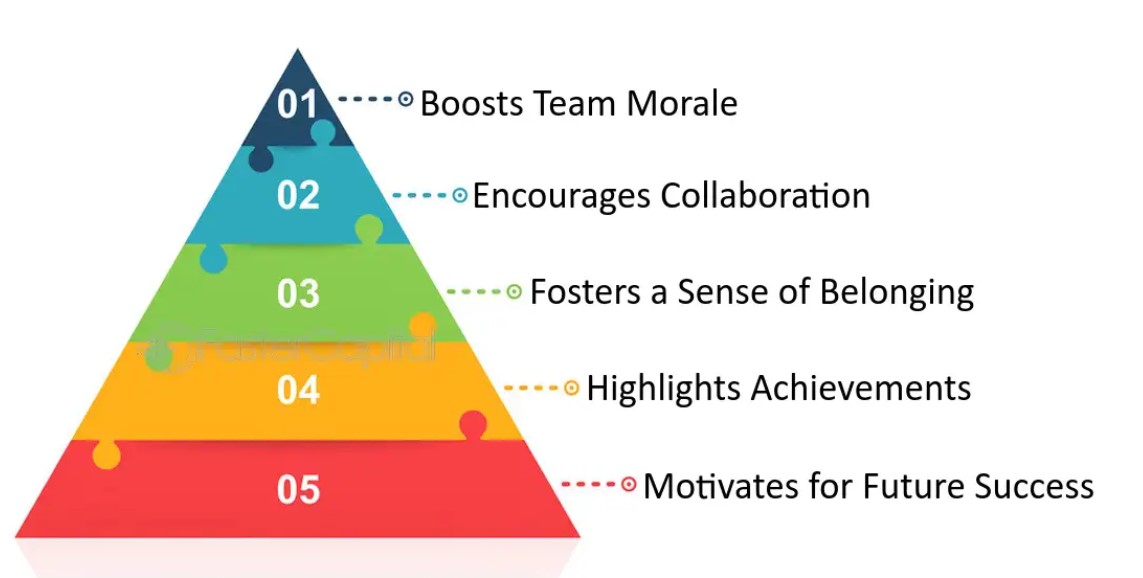
5. Boosting Team Morale: The Underrated Team Building Strategy
An important but often overlooked factor in successful team building is morale. Why so? Quite simply, when employees are happy and feel valued, they are more likely to be productive, creative, and cooperative. Here's how to bolster team morale.
To start with, recognise individual and team achievements with rewards that reflect their efforts, whether it's a small token, a word of appreciation, or publicly recognizing their work at company meetings. This can make a significant difference in how a team member feels about their role and contribution to the team.
Another way to lift morale is through fun, participatory team building activities. It might seem unrelated to business tasks, but by merely having fun and laughing together, relationships can be deepened and a sense of camaraderie built. These events can range from simple icebreakers during meetings to day-long retreats or workshops.
Moreover, creating a supportive work environment where each team member feels heard and valued is vital. Regularly solicit feedback, implement suggestions wherever possible, and ensure that everyone knows they have a voice that matters.
Finally, work-life balance is another significant aspect of maintaining high morale. Make sure your team isn't overworked, and stress the importance of time off. It's a sign that you respect them and their personal time, which can lead to lower turnover, greater job satisfaction, and increased team spirit.
In conclusion, boosting team morale is about creating a positive environment where team members feel appreciated, supported, and balanced. And though it might seem intangible compared to other team building strategies, its impact on team cohesion and success is undeniable.

6. Implementing Conflict Resolution for a Cohesive Team
In the world of business, conflicts between team members are somewhat inevitable. However, these conflicts don't have to spell disaster for your team. Instead, they can be fantastic opportunities for growth and development, provided they are expertly handled. That's when the art of conflict resolution comes into play.
As a manager, you need to be trained in conflict management strategies that can help resolve workplace disputes and turn them into favourable outcomes. When team members know that conflicts will be acknowledged and fairly addressed, they feel more secure and are more likely to contribute positively to the team.
Conflict resolution begins with careful listening. You must involve every party and ensure each of them feels heard. When team members feel their perspectives are valued, they are more likely to open up and contribute to the resolution process. Furthermore, facilitating open discussion can help in identifying the root cause of the situation, enabling more effective resolution.
Remember, finding common ground is often the key to solving disputes. Encourage your team members to seek empathy and understanding rather than sticking to their guns. This can help to quickly defuse tense situations and foster stronger relationships within the team.
Dealing with conflicts effectively also means preventing them before they occur. Build a work culture that emphasizes cooperation, mutual respect, and open communication. Offer training and resources in conflict resolution to your team members. When they have the skills to handle conflicts themselves, they’ll feel more empowered and less likely to need manager intervention.
Consider incorporating team-building exercises that promote conflict resolution skills. Not only can these encourage better collaboration and communication, but they also help in building a stronger, more cohesive team. These exercises can range from problem-solving tasks to role-playing scenarios, all designed to harness effective conflict management skills.
In summary, successful conflict resolution includes a proactive approach in preventing disputes, providing robust resolution methods, and fostering a collaborative work environment. By implementing these strategies, you can ensure a cohesive, high-performing team that thrives amidst challenges and is well-equipped to handle any conflict that may arise.
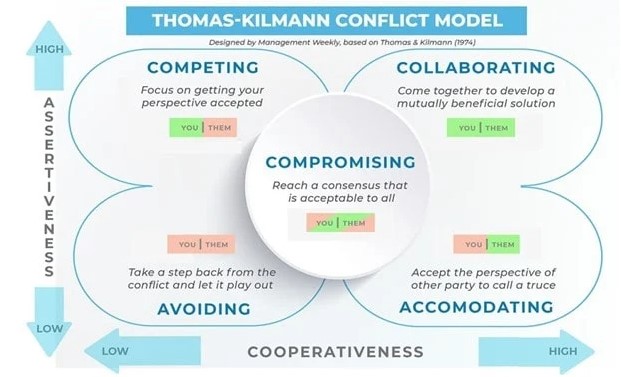
7. The Power of Shared Goals in Team Building
Setting shared goals is an integral part of constructing a successful team. When everyone on the team understands and commits to the same objectives, it paves the way for a unified effort and increased productivity. Not only does this provide a clear direction, but it also fosters motivation and engagement amongst team members. This involves, among other things:
- Making The Vision Clear Every good team should work towards a shared vision. Communicating the organization's broader goals and objectives to your team instills a stronger sense of purpose, ensuring all team members are alignment. This shared understanding helps to create an environment where each team member works enthusiastically towards common objectives.
- Individual Goals Aligning With Team Goals: It's also important to recognize and align individual goals with team goals. When employees see how their personal contribution impacts the wider team and aligns with their own professional growth, it significantly boosts their commitment and motivation. As a business manager, encouraging this connection between personal and team goals enhances individual accountability and responsibility.
- Transforming Goals into Actions: An additional crucial step is turning these shared visions and goals into actions. This involves clearly defining roles and responsibilities, delivering specific and streamlined instructions, providing the resources required, and creating a timeline for execution. Remember to periodically reassess and adjust these goals as needs and circumstances may change.
- Communicate and Repeat.
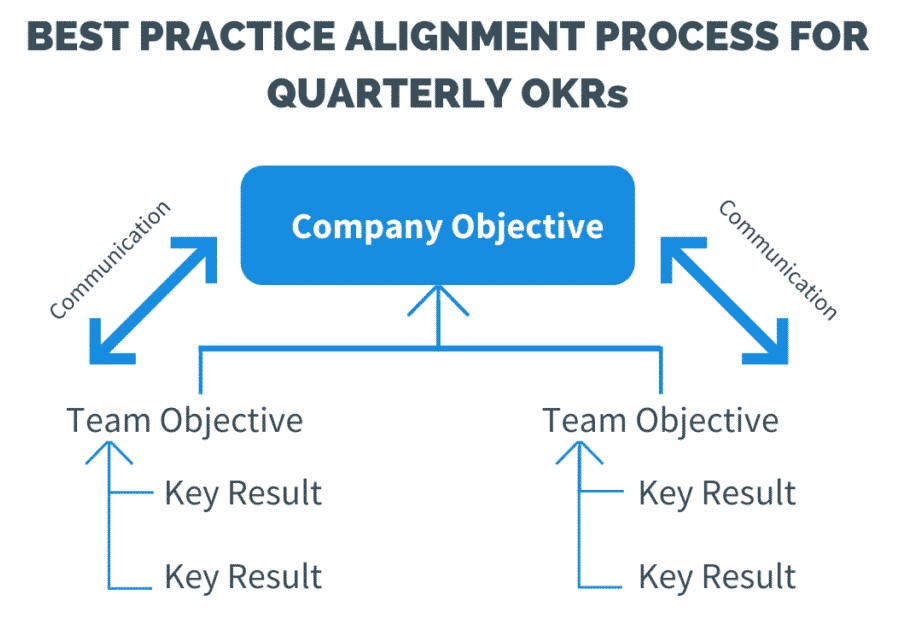
8. Building Trust Among Team Members: A Strategy Every Manager Should Implement
Trust forms the cornerstone of successful team dynamics. As a business leader, it's your role to foster this trust among your team members. You might be asking, "How do I facilitate trust within my team?" Well, one effective strategy is through open communication.
Implementing transparent modes of communication zeroes out ambiguity. It invites your team members to share their thoughts, ideas, and fears without hesitation. When people feel heard and their opinions valued, it brings about a sense of belonging and enhances trust within the team.
Another key action is to demonstrate dependability by delivering on promises - be reliable. Minor as it may seem, this consistency will establish you as a leader who can be trusted, thereby fostering a similar attitude within the team.
Building trust isn't just about words; it's about actions. Show your trust in team members by delegating tasks and giving them autonomy to make their decisions. This subtle gesture of confidence can significantly boost their trust in not only you as the leader, but also in their fellow teammates.
Last, but not the least, recognising and appreciating each team member's contributions also nurtures trust. A person who feels recognized and valued will inherently trust their environment more easily, thus bolstering the bond within the team.
In a nutshell, building trust is an ongoing process. It's a combination of transparency, consistency, autonomy, and recognition. Utilize these strategies to create a cohesive, resilient, and productive team. Remember, fostering trust is worth the effort as it feeds directly into the overall team performance and success.
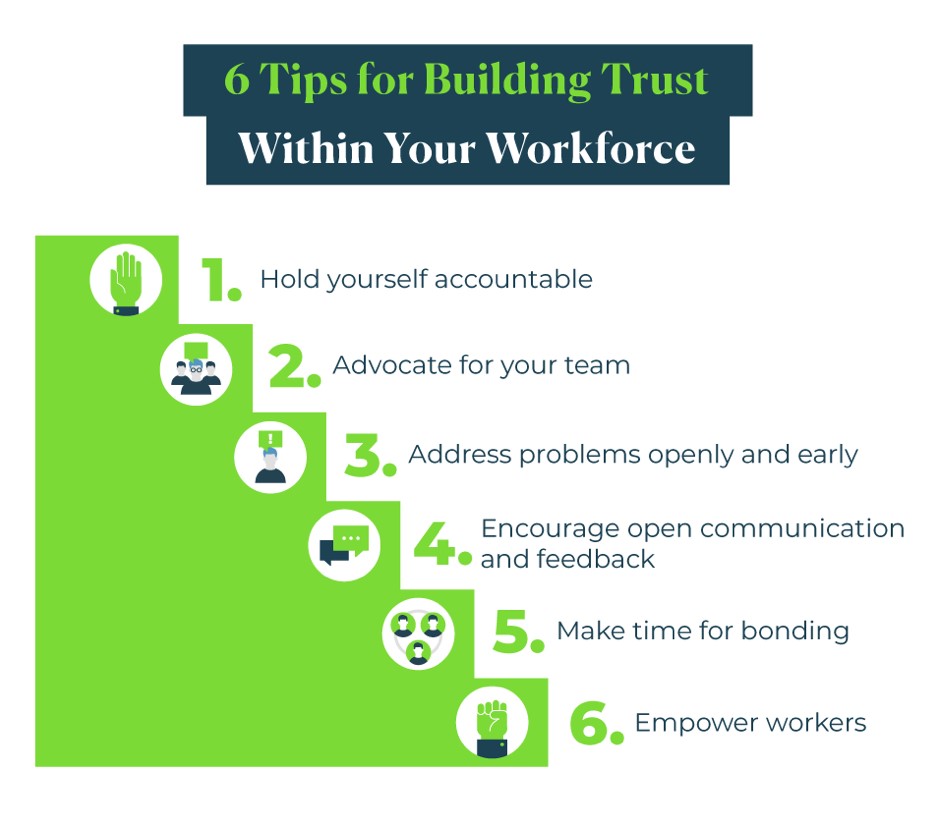
9. Continuous Evaluation and Improvement: A Must-know Team Building Strategy
Investing time and resources into a team is just one part of the equation. To ensure that those resources are used effectively, continuous evaluation and improvement play a pivotal role. As a business leader, you should encourage a culture of self-improvement and progress within your team.
Continuous evaluation is a feedback mechanism more than a judgment process. It is a way for business leaders to observe and track their team's performance, pinpoint areas for improvement, and provide constructive feedback. Regular employee evaluations provide a valuable opportunity to have one-on-ones with team members, understand their concerns and aspirations, and bridge any communication gaps.
Furthermore, performance reviews shed light on areas where further training might be required or where the team's efforts can be redirected for maximum efficiency. Remember that an easy but effective way to motivate your team towards self-improvement is by celebrating small wins and improvements, by creating an atmosphere that values growth and skill development.
But the evaluation process isn’t the end. Business leaders should remember that progress is not a static goal but a dynamic one. The concept of continuous improvement, adopted from the Japanese Kaizen philosophy, signifies making small incremental changes for the better over time. By focusing on continuous improvement, businesses can make enhancements in efficiency, productivity, and team harmony, which all add up to a superior team performance in the long run.
Remember, the ultimate aim of continuous evaluation and improvement isn't to find faults and apportion blame. Instead, the goal is to develop a collaborative, high-performing and highly motivated team that grows together in achieving business objectives. So, make it a crucial part of your team-building plan to regularly evaluate results and seek improvement areas at both individual and group levels.
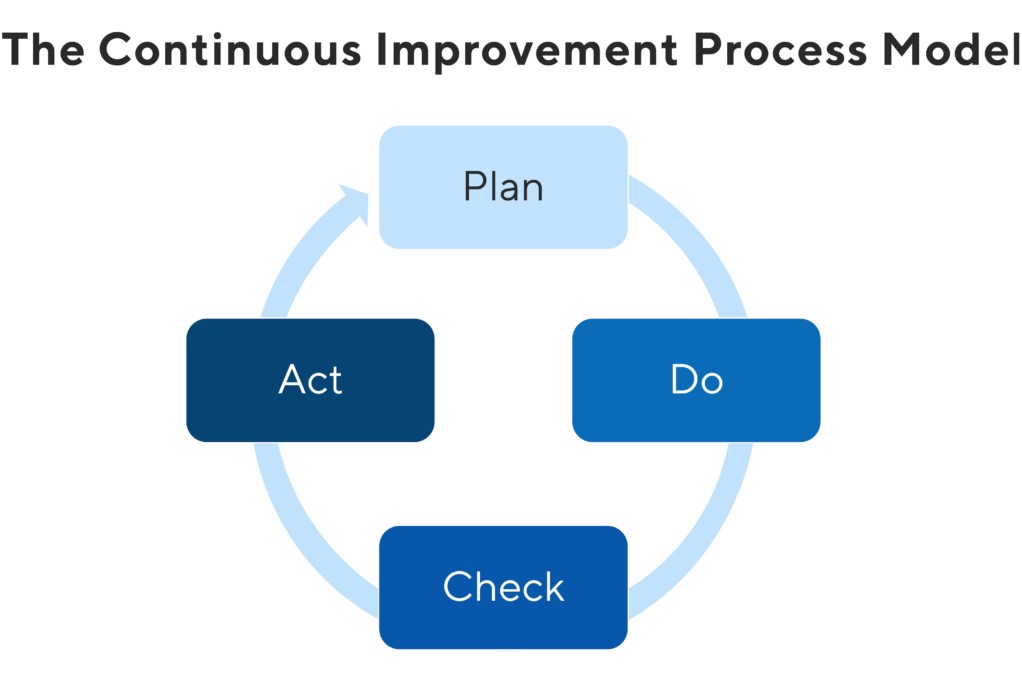
Learning & Leading: The Value of an MBA in Digital Transformation for Team Building Success
As we've journeyed through the maze of team building strategies crucial for business managers, it becomes undeniable that leading a vibrant and successful team in today's ever-evolving business landscape requires comprehensive knowledge and adaptive skills. These are qualities that a Digital Transformation MBA imparts.
A Digital Transformation Master goes beyond equipping you with managerial skills; it fashions you into a leader who understands the digital operations of modern businesses, fostering a team culture that embraces innovation and tech-driven changes. This puts you ahead in marshaling your team in this age of digital disruption.
At the crux of the matter, building high-performing, collaborative teams remains an evolving endeavor that is as exciting as it is challenging. With the learnings from a Digital Transformation MBA, you not only gain insights into the foundations of effective team building and management of human resources, but also acquire the tools and methodologies to navigate and mould digital changes in your organisational setup.

Related module


